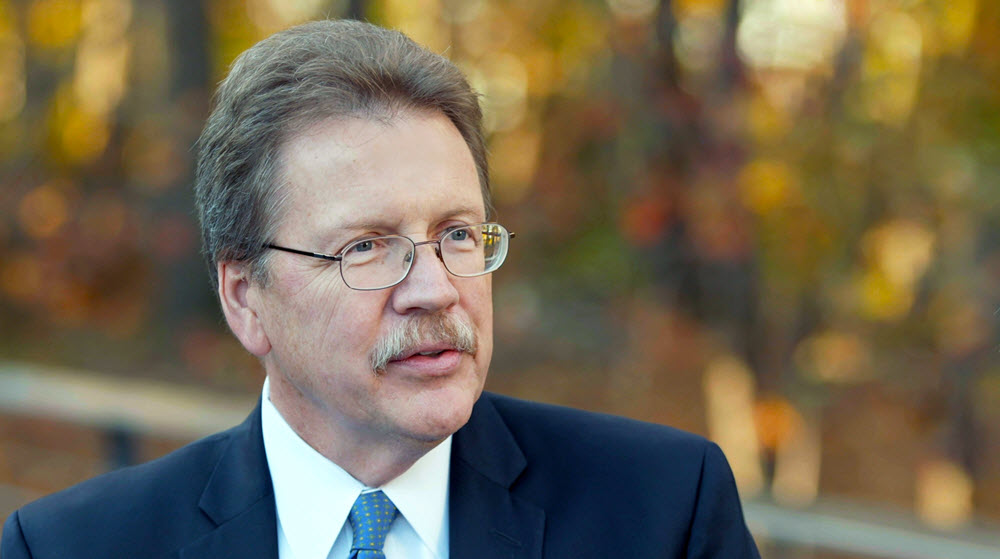IBM's Masters of Invention
Introducing 7 of IBM’s Masters of Invention
It’s a remarkable winning streak.
Recently, for the 27th consecutive year, IBM announced it had received more U.S. patents than any other company. What’s more, the total for 2019—9,262 patents—was the highest ever awarded to a single company.
Impressive as that record may be, it’s simply scorekeeping for the real IBM game: scalable innovation that continually reshapes the way we work and live.
Among the world’s biggest technology companies, IBM stands alone as the global leader in original and applied research. The patents are important, of course, because they ensure that IBM’s continual stream of technological breakthroughs can lead to scalable, commercial products and services that can be adopted by business and society.
 IBMJohn Kelly, executive vice president, oversees intellectual property at IBM.
IBMJohn Kelly, executive vice president, oversees intellectual property at IBM.
The DRAM circuit that an IBM inventor named Robert H. Dennard patented in 1966, for example, now enables the billions of bytes of memory that make today’s smartphones the equivalent of a mobile mainframe computer.
And it was IBM research in artificial intelligence over the decades, when scientists and engineers elsewhere were giving up in frustration, that has made AI part of everyday modern life.
Or take quantum computing, something IBM physicists began exploring in the 1980s. The technology, which harnesses the unique properties of sub-atomic physics, is now in the early stages of adoption by companies and research universities worldwide, which are tapping into a shared global fleet of IBM quantum machines.
Balancing ‘Far-Out’ With Business Relevance
AI and quantum research continue unabated. So does basic research into blockchain, cloud computing and the Internet of Things, all of which were among the fields in which IBM inventors secured patents in 2019. That work comes from the IBM Research division, as well as the company’s development labs around the world.
In some cases, primary research is the main task of the scientists and engineers who secure patents. In many other instances, inventing is work that IBMers do on their own time, when they’re not busy with client-specific projects. Either way, IBM's culture of innovation, inquiry and collaboration has yielded a steady stream of technological breakthroughs that are already changing how the company and its clients do business.
“We’ve been able to do an incredibly good job over the decades of balancing between bleeding-edge, far-out, high-risk research and being relevant to the company,’’ says John E. Kelly III, the IBM executive vice president who oversees intellectual property and has been with the company since 1980.
So valued are the IBM inventors who turn their research into patentable ideas that the company has developed a career path whose milestones include becoming a Master Inventor. The designation is awarded to those who, according to the company, have “mastered the patent process, mentored broadly, added value to IBM's portfolio and demonstrated sustained innovation leadership and service.” IBM also pays inventors for their patents.
“Culturally,’’ Kelly says, “these people are really, really inventive and innovative. We try to create a culture where that’s appreciated, but it’s also recognized and rewarded.’’
The Art of the Patent
Kelly also acknowledges the art and craft of the patent process as perfected by IBM’s intellectual property lawyers, led by Manny Schecter, the company’s chief patent counsel.
Schecter was an IBM patent lawyer working from Tucson, Ariz., when the company reached the top of the patent charts in 1993 (with 1,085 that year). He recalls it as a turning point, in which IBM unseated the Japanese titans like Canon and Hitachi that had dominated U.S. patenting for much of the previous decade.
 ROBERT JONES FOR IBMManny Schecter, IBM's chief patent counsel.
ROBERT JONES FOR IBMManny Schecter, IBM's chief patent counsel.
“Being the leader in patents is a reminder to the world that IBM is an innovator,” says Schechter. “We’re really good at seeing the nugget of what’s new each time the inventor brings something forward."
This year, Feb. 11 is National Inventors Day. In the run-up to that day of national recognition, we’re presenting a series of profiles of IBM inventors and the culture of innovation that supports them.
As you’ll see, part of the marvel is the diverse global talent pool responsible for these inventions. It’s the work of these scientists and engineers today that will drive IBM’s business tomorrow, and make the world more efficient and livable in the years to come.
“If you went to any IBM business unit and said, ‘Hey, we’re going to cut off research,’ they’d go crazy,” Kelly says. “They know it’s IBM’s lifeblood.’’